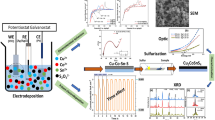Abstract
Natural halloysite clay nanotubes are cheap and available in large quantities, thus seem superior to the other nanotube-based materials. Halloysite nanotubes are used to form structured substrates for surface-enhanced Raman scattering (SERS). Specifically, layered aluminum-halloysite- (noble) metal substrates were prepared by deposition of halloysite nanotubes on aluminum foil, followed by thin metal film coatings via vacuum evaporation. The composite substrates required no capping agent on the metal surface and thus avoided background peaks in the Raman spectra, making them well suited for SERS studies. Gold-, silver-, and copper-coated substrates exhibited SERS for p-mercaptobenzoic acid, whereas uncoated and platinum-coated substrates did not. The SERS enhancement factors for the gold-, silver-, and copper-coated substrates were, by a conservative estimate, 1.4 × 105, 3.5 × 104, and 3.5 × 103, respectively. Interestingly enough, the SERS enhancement factors of substrates decrease in a row: Au > Ag > Cu, which differ from those for the corresponding metal nanoparticles.



Similar content being viewed by others
References
C. Yu, M. Sosnowski, N.M. Ravindra, and Z. Iqbal, JOM 66, 608 (2014).
D.W.H. Fam, A. Palaniappan, A.I.Y. Tok, B. Liedberg, and S.M. Moochhala, Sens. Actuators, B 157, 1 (2011).
J.T. Korhonen, P. Hiekkataipale, J. Malm, M. Karppinen, O. Ikkala, and R.H.A. Ras, ACS Nano 5, 1967 (2011).
Y.-C. Chen, R.J. Young, J.V. Macpherson, and N.R. Wilson, J. Raman Spectrosc. 42, 1255 (2011).
X. Li, G. Chen, L. Yang, Z. Jin, and J. Liu, Adv. Funct. Mater. 20, 2815 (2010).
P. Leyton, J.S. Gómez-Jeria, S. Sanchez-Cortes, C. Domingo, and M. Campos-Vallette, J. Phys. Chem. B 110, 6470 (2006).
M. Sanles-Sobrido, L. Rodríguez-Lorenzo, S. Lorenzo-Abalde, A. González-Fernández, M.A. Correa-Duarte, R.A. Alvarez-Puebla, and L.M. Liz-Marzán, Nanoscale 1, 153 (2009).
R. Narayan, JOM 64, 505 (2012).
X. Wang, C. Wang, L. Cheng, S.-T. Lee, and Z. Liu, J. Am. Chem. Soc. 134, 7414 (2012).
A. Roguska, A. Kudelski, M. Pisarek, M. Opara, and M. Janik-Czachor, Appl. Surf. Sci. 257, 8182 (2011).
J. Lao and D. Moldovan, JOM 65, 168 (2013).
Z. Jiang, Q. Zhang, C. Zong, B.-J. Liu, B. Ren, Z. Xie, and L. Zheng, J. Mater. Chem. 22, 18192 (2012).
Y. Lvov and E. Abdullayev, Prog. Polym. Sci. 38, 1690 (2013).
M. Zou, M. Du, M. Zhang, T. Yang, H. Zhu, P. Wang, and S. Bao, Mater. Res. Bull. 61, 375 (2015).
E. Abdullayev, K. Sakakibara, K. Okamoto, W. Wei, K. Ariga, and Y. Lvov, ACS Appl. Mater. Interfaces 3, 4040 (2011).
C. Li, X. Li, X. Duan, G. Li, and J. Wang, J. Colloid Interface Sci. 436, 70 (2014).
M. Zieba, J.L. Hueso, M. Arruebo, G. Martínez, and J. Santamaría, New J. Chem. 38, 2037 (2014).
H. Zhu, M.L. Du, M.L. Zou, C.S. Xu, and Y.Q. Fu, Dalton Trans. 41, 10465 (2012).
V. Vinokurov, A. Berberov, D. Afonin, H. Borzaev, E. Ivanov, P. Gushchin, and Y. Lvov, IOP Conf. Ser. Mater. Sci. Eng. 64, 012017 (2014).
H. Guo, L. Ding, and Y. Mo, J. Mol. Struct. 991, 103 (2011).
Acknowledgements
This work is supported by Ministry of Education and Science of the Russian Federation (Target funding, Project 16.1812.2014/K). The authors are grateful to Kumiko Shimogami (Edanz editing) for language help.
Conflict of interest
The authors declare that they have no conflict of interest.
Author information
Authors and Affiliations
Corresponding author
Rights and permissions
About this article
Cite this article
Vinokurov, V.A., Kopitsyn, D.S., Kotelev, M.S. et al. Natural Ceramic Nanotube Substrates for Surface-Enhanced Raman Spectroscopy. JOM 67, 2877–2880 (2015). https://doi.org/10.1007/s11837-015-1494-5
Received:
Accepted:
Published:
Issue Date:
DOI: https://doi.org/10.1007/s11837-015-1494-5




